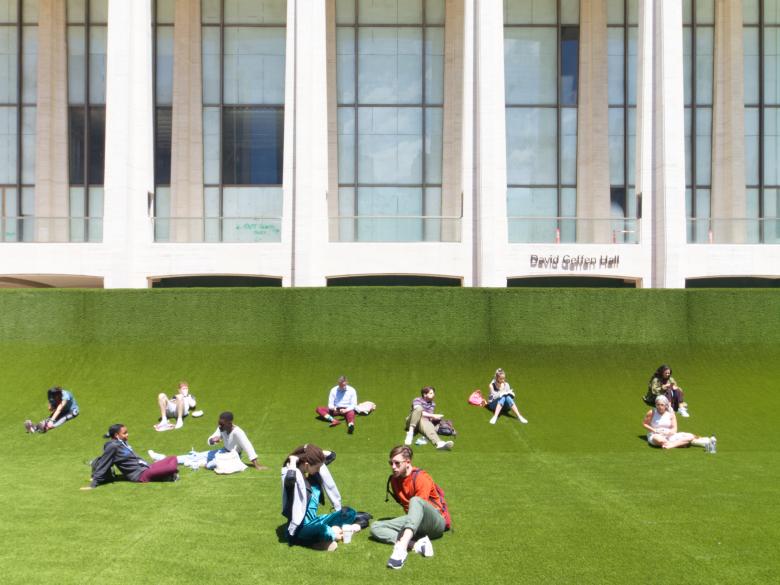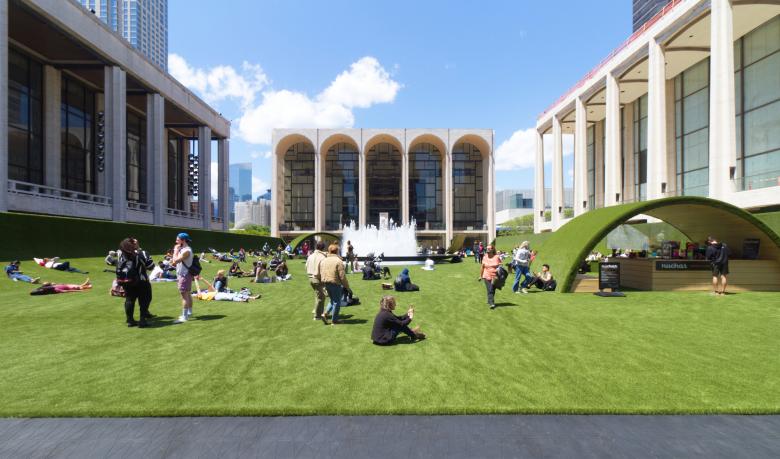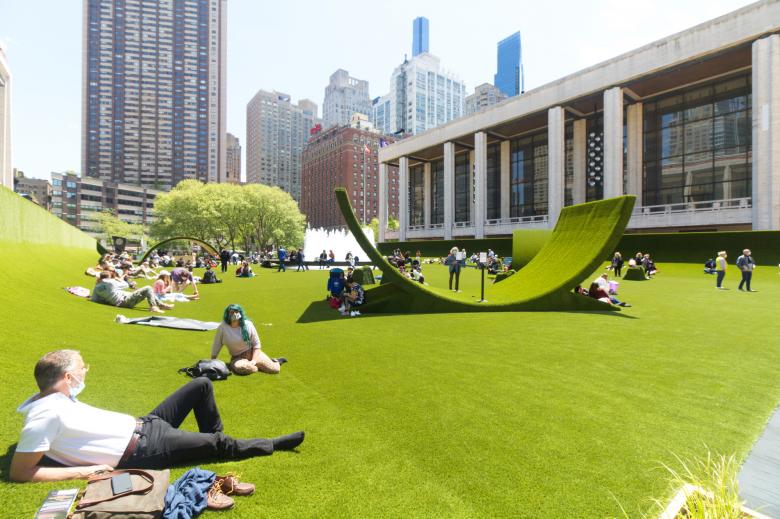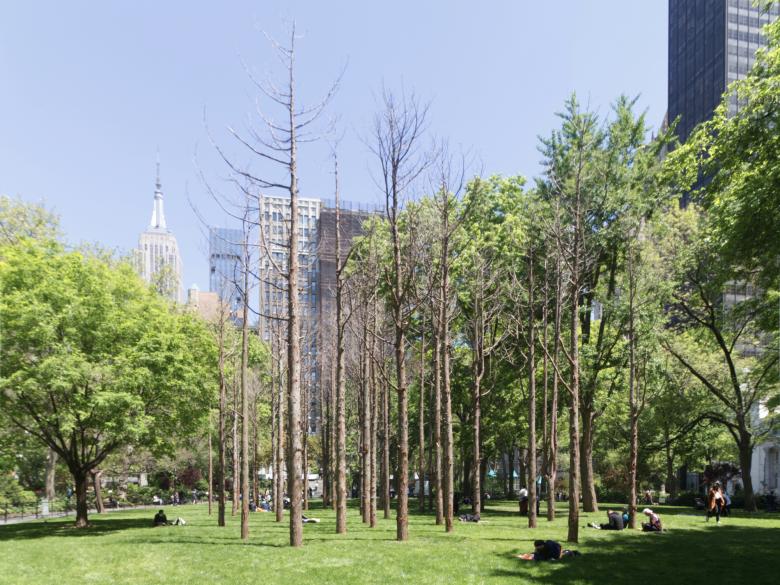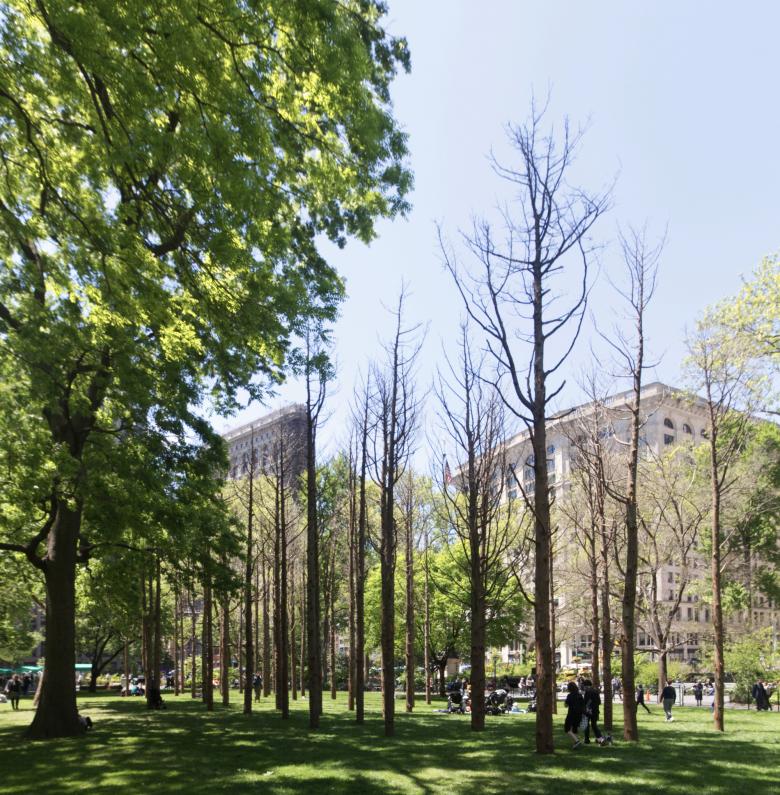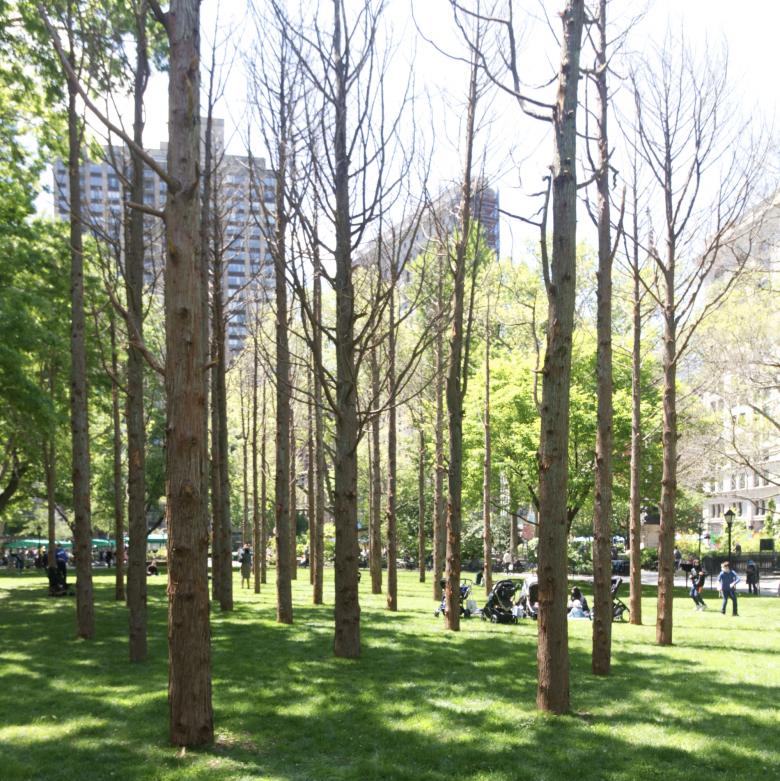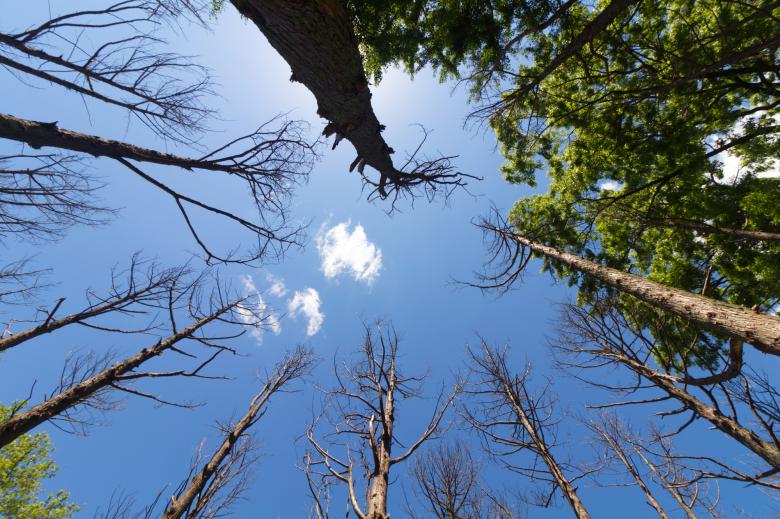Photo: John Hill/World-Architects
Two new installations in Manhattan — Maya Lin: Ghost Forest at Madison Square Park and "The GREEN" at Lincoln Center — take divergent approaches to nature but each give New Yorkers pleasant settings for enjoying the outdoors. World-Architects visited them on a sunny day shortly after they opened to the public.
The GREEN
The GREEN, which opened on May 10, covers the usually hardscape plaza at the center of Lincoln Center for the Performing Arts with soft synthetic turf. Designed by Mimi Lien, a set designer, the 14,000-square-foot installation is the centerpiece of Lincoln Center's Restart Stages, which moves the performing arts outdoors to ten stages around the campus. The GREEN is intended to be an inviting place to relax, grab a bite to eat, read a book, and just enjoy being outside — as people were doing on my visit.
Most people will approach from Columbus Avenue on the east and be greeted with a green carpet that even vaults over an empanada stand, on the right. (Photo: John Hill/World-Architects)
The only original part of the plaza not covered by the turf is its iconic fountain, which was reworked by Diller Scofidio + Renfro (with WET) in their transformation of Lincoln Center a decade ago. (Photo: John Hill/World-Architects)
The green surface ramps up on the north and south — making the outdoor space akin to an elongated half-pipe — to provide ample places to sit and lounge. (Photo: John Hill/World-Architects)
Variations of half-pipes and vaults are sprinkled about the turfed plaza ... (Photo: John Hill/World-Architects)
... including a covered space with seats for reading books from a little free library. (Photo: John Hill/World-Architects)
Ghost Forest
Ghost Forest, which also opened on May 10, takes a dramatically different approach to nature: artist/architect Maya Lin transplanted 49 Atlantic white cedar trees from New Jersey's Pine Barrens as a commentary on climate change. According to the Madison Square Park website, "a ghost forest is the evidence of a dead woodland that was once vibrant." This ghost forest draws attention to "the Atlantic white cedar populations on the East Coast that are endangered by past forestry practices and threats from climate change, including extreme weather events that yield salt water intrusion, wind events, and fire."
On approach, the roughly 40-foot-tall trees blend into the park's trees yet also stand out from them due to their lack of leaves. (Photo: John Hill/World-Architects)
Outside of some explanatory signage along the park's pathways, there is no indication that the grid of trees is an artwork. (Photo: John Hill/World-Architects)
Though not as crowded as Lincoln Center, Ghost Forest also invites people to sit down on the (natural) turf, with a few groups and individuals doing so during my visit. (Photo: John Hill/World-Architects)
Lin also created a Soundscape that visitors can listen to (
via the Mad. Sq. Pk. website) while walking or sitting among the cedar trees; the audio includes "sounds of some of the native species of animals once common to Manhattan." (Photo: John Hill/World-Architects)
In addition to the installation and audio, Ghost Forest includes a series of public programs "focused on nature-based solutions to climate change" and the planting of one thousand trees and shrubs during the run of the exhibition, from May 10 to November 14, 2021. (Photo: John Hill/World-Architects)
